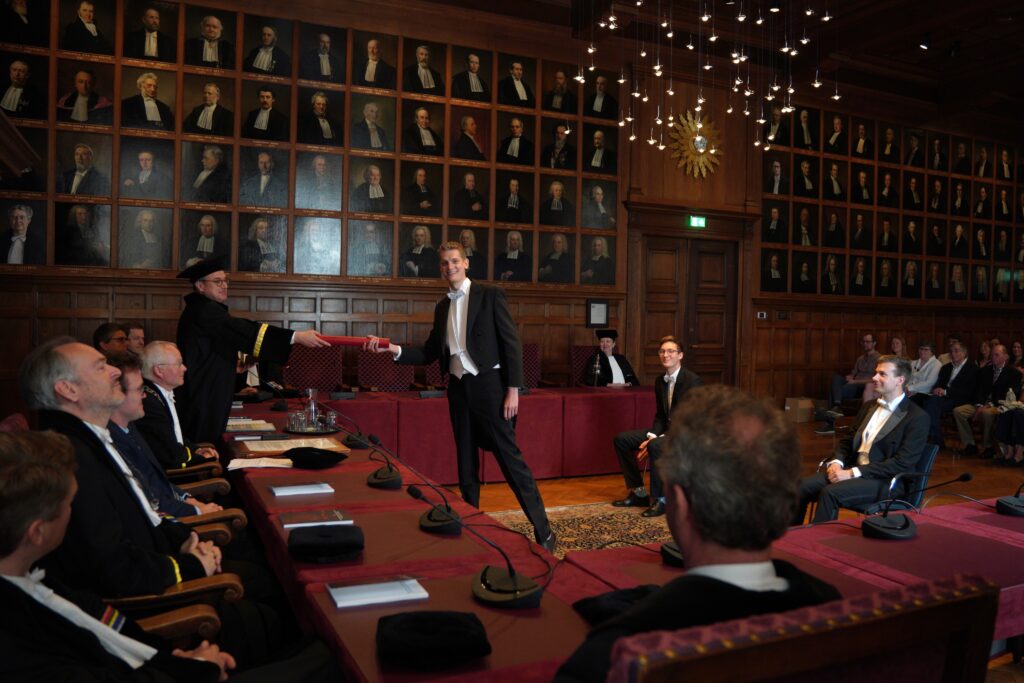Congratulations to Dr. Erik Maris for an outstanding PhD defense. Erik has used fluorescence microscopy to map pore structure & connectivity in porous (zeolite) catalyst materials by monitoring single molecules & carbon dots. Wishing you all success!
To reduce our dependency of fossil resources, we have to develop alternative manufacturing processes to produce our materials, fuels, and chemicals. Catalysis plays a major role in this resource transition, because it is used in the production of an enormous variety of products around us. The alternative processes required for the sustainability effort demand either development of new catalysts, or optimization of existing catalysts. The goal of this PhD thesis is to gain a better understanding of the working principles of catalysts that are based on zeolite materials. Comprehension of these principles will allow for faster and more effective improvement of the “design” of a catalyst material and can thus lead to more efficient transition towards sustainable chemical processes. We focus on gaining a better understanding of the motion of molecules through the catalyst particle. To explain this, we imagine the catalyst particle as a city to which people travel for work. The pores in the catalyst represent the roads and the molecules are commuters in a car. To better understand what makes the road network of a catalyst particle efficient, we investigate the relationship between the properties of the pore network (roads) and motion behavior of the molecules (commuters). We accomplish this by following individual molecules or groups of molecules as they move through the catalyst. By studying the motion behavior of molecules, we can map the pore network by, for example, examining where traffic jams occur. In materials where the pore network is already known, we investigate the relationship between the pore network and the motion behavior of molecules.

